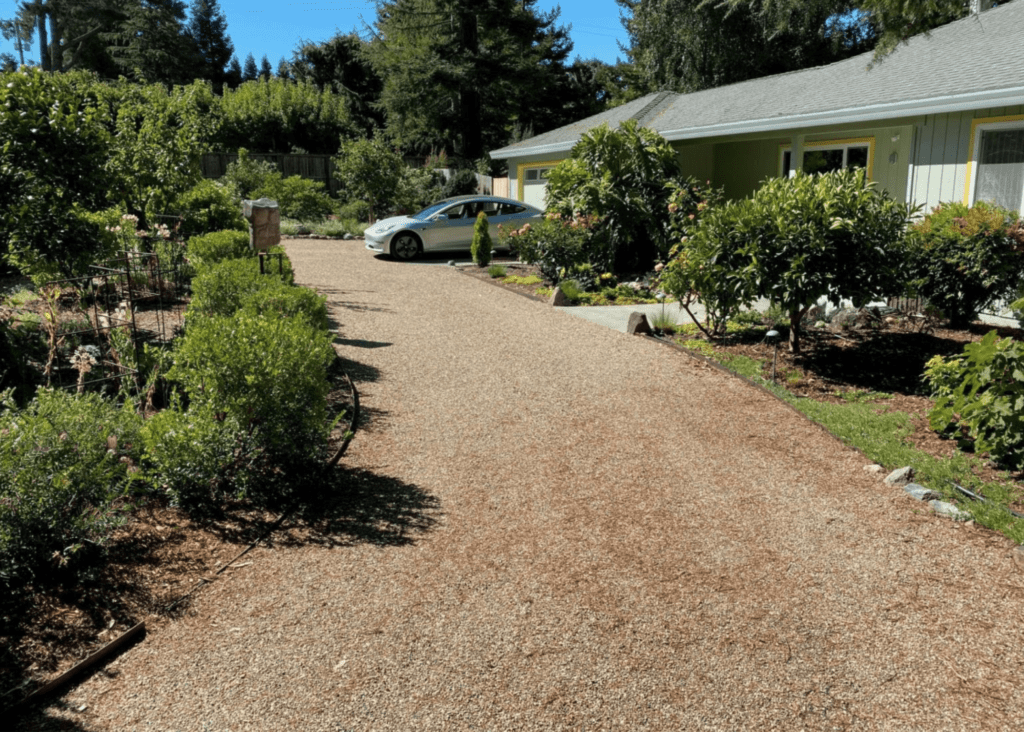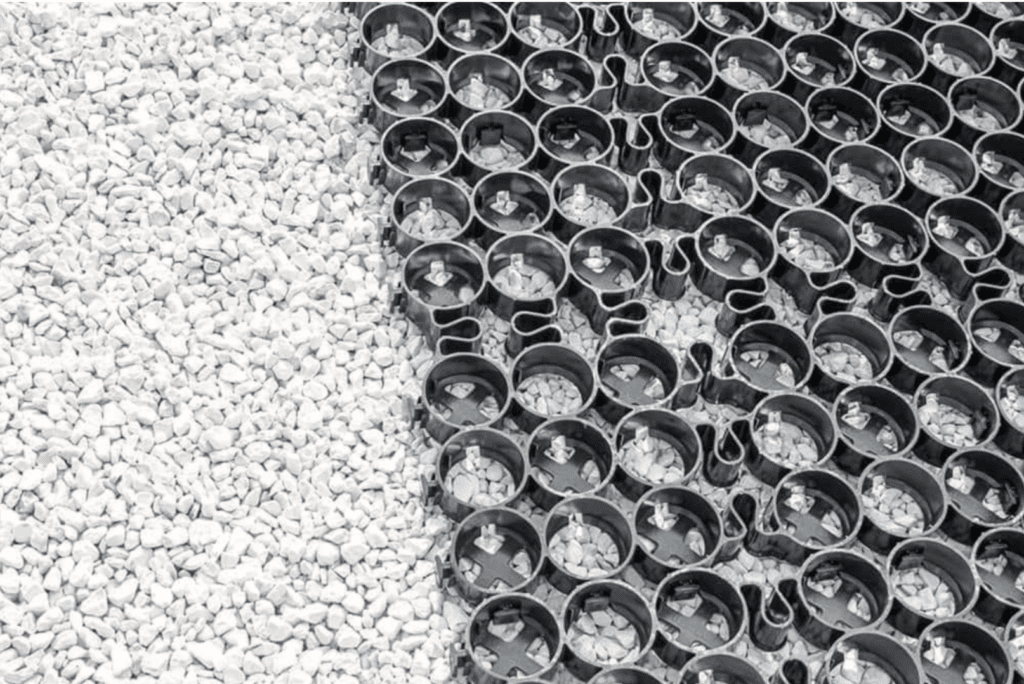Gravel driveways are great for many reasons. Not only are they one of the least expensive types of driveways, they can also look stylish and provide much-needed permeability for your parking area.

However, especially with unstabilized gravel, these driveways can easily spread and begin to rut as the gravel migrates out of the parking area. This is why you need gravel driveway edging if you want to keep your gravel in place.
Gravel driveway edging serves as a way to help keep gravel in place and can even help boost curb appeal in some cases. However, not all methods of keeping gravel in place have the same benefits, so in case you’re in need of new driveway edging for your gravel, here are some ideas for you to consider:
Types of Driveway Edging for Gravel
DIY driveway edging ideas are some of the easiest to implement and can save you a ton of time, energy, and money. They prevent you from having to keep raking gravel back into place or buying more gravel to replace the stuff that’s spread out. There are two main types of driveway edging, flat and raised.
1. Flat Edging
Flat edging sits level with the rest of the driveway surface and is usually installed during the initial driveway installation. Flat edging can also be added after the fact by excavating the border of your driveway, laying down a sub-base of sand or rock, and installing the edging material as needed.

Flat edging usually takes the form of flat, concrete blocks. You can get creative with your flat driveway edging ideas, though, and choose colored or imprinted stone pavers for a unique color scheme. Flat edging can help with mitigating the spread of gravel a bit, but it’s mostly useful in that it provides an opportunity to implement a new aesthetic into your driveway. It also prevents driveway erosion from occurring along the sides of your gravel border.
2. Raised Edging
The other main type of driveway edging is known as raised edging. This edging sits above the regular driveway surface, acting as a true barrier that prevents gravel from spilling out. It’s much more effective than flat edging at preventing gravel migration and can take many different forms.

Concrete blocks and natural stone pavers are a couple of types of raised driveway edging ideas that many homeowners prefer. You could also use shrubs, flowers, wooden planks or posts, logs, or bricks as a raised border for your gravel driveway.
An Alternative to Gravel Edging
3. Permeable Pavers
When it comes to gravel driveway edging ideas, one that most people don’t think of is permeable pavement. TRUEGRID PRO LITE and TRUEGRID PRO PLUS pavers, for instance, are the perfect material for keeping your gravel firmly locked in place. TRUEGRID pavers eliminate the need for driveway edging completely because they lock gravel into their empty cells which weighs down the pavers and prevents gravel from spreading around or migrating.

Many homeowners and gravel pavement owners are switching to TRUEGRID which offers to stabilize their gravel from day one, as opposed to installing loose gravel and using edging to try and prevent it from spreading. A TRUEGRID gravel driveway installation can be completed as quickly as a loose gravel driveway, with the entire process taking less than a day in most cases.

One of the main benefits that this type of gravel driveway has over loose gravel with edging is the lack of maintenance requirements. With flat edging, you’ll still have to rake in and/or replace a certain amount of gravel that manages to spill over the sides.
The edging itself can deteriorate as well. Concrete blocks and similar materials are prone to chipping and cracking, especially in freeze/thaw cycles. These materials need to be resealed every 5 years or so to keep them in top shape.
TRUEGRID permeable pavement, on the other hand, is better than most driveway edging ideas because it can last 60 years without needing almost any maintenance at all. These pavers are impervious to temperature extremes, insects, warping, UV-rays, and other types of damage that wood, stone, concrete, and vegetation are not.
Build the Perfect Gravel Driveway with TRUEGRID
If you want a gravel driveway that you won’t have to worry about maintaining very much, TRUEGRID pavers are the way to go. Instead of installing edging that’s ineffective and fragile, why not use a driveway material that naturally locks your gravel in place?
With a TRUEGRID permeable gravel driveway, you can stop searching through DIY gravel driveway ideas, and rest assured knowing that your gravel driveway will stay intact for up to 60 years.
If you want the most durable, eco-friendly, permeable, and low-maintenance gravel driveway solution on the planet, don’t hesitate to call TRUEGRID today and get in touch with a pavement professional.



